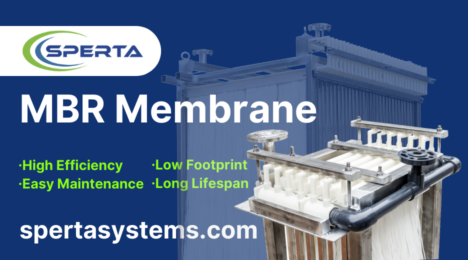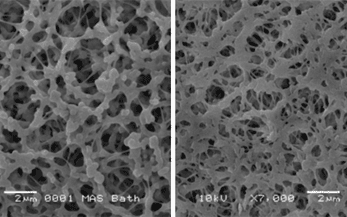Water management – sustaining freshwater supplies

Simon Judd has over 35 years’ post-doctorate experience in all aspects of water and wastewater treatment technology, both in academic and industrial R&D. He has (co-)authored six book titles and over 200 peer-reviewed publications in water and wastewater treatment.
There has been a lot of chatter around water reuse of late. The ever-decreasing supply of freshwater – brought home by the shocking pictures in August of this year of the state of key European rivers such as the Rhine, Loire, Po and Danube – has, not unnaturally, led to revisiting of the subject of wastewater reclamation generally.
However, as those involved in strategic water management are quick to point out, a substantial proportion of river flows are made up of treated (or, in some regions of the world, untreated) municipal wastewater. For example, roughly 20% of the Manchester Ship Canal flow is made up of the discharge from the Davyhulme wastewater treatment works. So, if these flows are diverted elsewhere then the river flows are further reduced.
Of course, the utility and value of the reclaimed wastewater is crucial in all of this. Water reclaimed for use in irrigation – the most common non-potable reuse (NPR) application – sustains the land-based natural environment and/or crop growth. In the case of the latter the material value of the reclaimed water can be directly quantified based on the crop yield and price. All well and good, but this is nonetheless at the expense of the proportion of the river flow.
It's informative to consider where this water ends up when used for irrigation. There are a number of routes for the water, whose relative proportions depend on the conditions. The water may percolate through the soil, run off the surface or evaporate from either the soil surface or the plant leaves (in which case it’s referred to as transpiration). Part of the runoff may end up in the waterways, and the percolated water in underground aquifers. But, sadly, the majority of the water is lost through combined evaporation and transpiration (i.e. evapotranspiration): only around 0.1% of the water taken up by plants is actually used to produce plant tissue.
So, if irrigation is deemed wasteful or unviable for some reason, what are the alternatives? Within the whole anthropogenic water balance (Fig. 1), there are generally three water sources: reservoirs/lakes, rivers and the sea. The freshwater, once used for domestic or industrial duties, becomes wastewater which can be discharged to the river or sea, or be reused – including for indirect or direct potable reuse (IPR/DPR).

If the general treatment requirements or characteristics of the streams are considered in turn (Table 1), it can be surmised that the treatment processes associated with conventional supply are slightly lower in cost and energy consumption than those required for NPR. IPR and DPR demand still higher costs and energy levels. Desalination of seawater for supply incurs a higher energy consumption than conventional treatment of freshwater, as well as generating a significant waste stream (the brine or concentrate) which impacts negatively on the environment when discharged.
| Stream | Supply | Treatment | Stream | Discharge | Treatment | |
|---|---|---|---|---|---|---|
*reservoir recharge (IPR)/irrigation | ||||||
| s1 | Reservoir | Conventional | d1 | Reuse* | Advanced (high energy for IPR/DPR) | |
| s2 | River | Conventional | d2 | River | Conventional | |
| s3 | Sea | Advanced (v. high energy) | d3 | Sea | Conventional | |
Looking at the complete anthropogenic cycle (Fig. 1), there are effectively nine options for combined supply and discharge/reuse (Table 2). Of these, the most wasteful/profligate (or least sustainable) is the use of seawater as a supply combined with discharging the treated wastewater to the sea, where its only utility is mitigating the impact of the discharged brine stream. The most sustainable option, in terms of environmental impact, would seem to be to use freshwater from lakes or reservoirs for supply and treat the resultant wastewater to allow its reuse. But this is only possible if the supply of reservoir water is sustained by sufficient rainfall. Also, reservoirs themselves sustain flora and fauna and often have some level of utility, though perhaps not to the same extent as rivers.
| Options | Water management | Energy demand |
|---|---|---|
| s1-d1 | Most sustainable if sufficient rainfall | Moderate |
| s1-d2 | Sustainable if sufficient rainfall | Low |
| s1-d3 | Unsustainable | Low |
| s2-d1 | Sustainable | Moderate |
| s2-d2 | Sustainable if use not excessive | Low |
| s2-d3 | Unsustainable | Low |
| s3-d1 | Unsustainable | Highest |
| s3-d2 | Unsustainable | Very high |
| s3-d3 | Least sustainable | Very high |
So, is this the future? Should we be building larger reservoirs and focus on recovering the water following its domestic/industrial use? Perhaps, but this analysis is extremely simplistic. There are different levels of sustainability arising from a vast range of circumstances and conditions specific to individual sites. The only certainty is that freshwater supplies are dwindling globally, and the sole truly sustainable option is to limit the demand for this freshwater and reduce the consumption of energy and non-sustainable resources required for its treatment and/or reuse.









